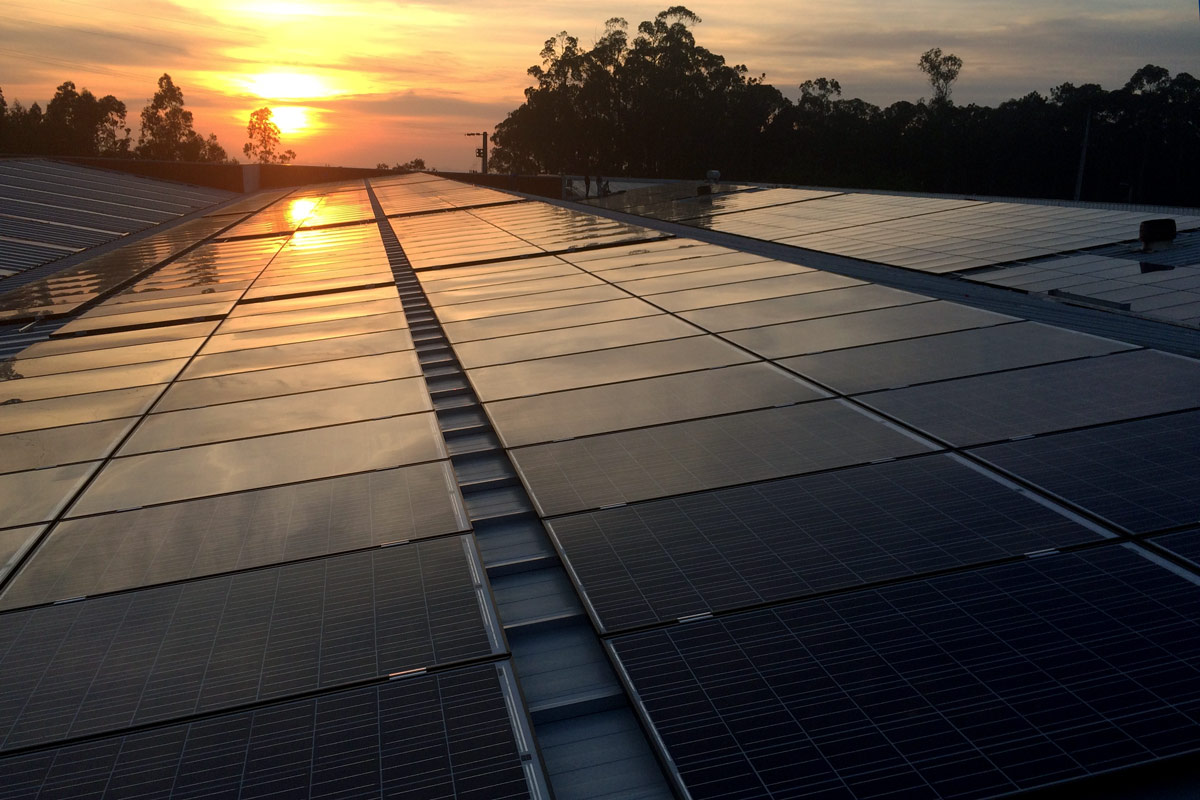
Rooftop PV systems and cost-effectiveness
What type of roof is suitable for a photovoltaic system and when does the installation pay off?
More and more companies are attaching increased importance to climate protection and are mindful of their ecological footprint. Solar power can make a welcome contribution towards greater environmental awareness. However, there are a few important points to consider before the final decision to install a photovoltaic roof system is made. Bernd Retzlik, Senior Sales Manager North at SENS, clarifies the most important questions regarding rooftop PV systems for companies from industry, trade and commerce in the following.
Is my roof suitable for a solar power system?
In all regions of Germany, the intensity of solar radiation is high enough for photovoltaic systems to be operated effectively. The yield of a system depends on its orientation and inclination. In the past, only south-facing surfaces with an angle of inclination of about 30 degrees were used. Nowadays, due to the use of their own electricity, PV systems with an east/west alignment and an inclination of as little as 10 to 15 degrees are also feasible. In this case, the modules are elevated using a lightweight construction system which imposes little weight on the roof.
Obstruction of the light by trees, neighbouring houses, antennas or the like should be avoided. Such shading can significantly reduce the energy yield, even though modules now have integrated bypass diodes to avoid the influence of a shaded module on the entire string.
It is also important that the roof is suitably covered. Roofs with artificial slate or corrugated fibre cement roofing, which were covered before 1990, may contain asbestos. It is prohibited by law to cover such areas with solar systems. However, after the roof has been renovated problemlos möglich. Bei SENS erhalten Sie das Komplettpaket: Wir kümmern uns sowohl um die Sanierung als auch um die Installation der neuen PV-Dachanlage.
What components does a solar power system consist of?
A solar power system essentially consists of the PV modules that are installed on the roof and an inverter that converts the direct current produced into grid-compliant alternating current. The inverter usually requires a load-bearing wall surface of about one square metre and should be installed in a cool and dry place. DC cables are laid between the modules and the inverter, and AC cables between the inverter and the metering cabinet.
How much energy does a solar power system generate and can the energy itself be used to counter rising electricity prices?
When using crystalline modules, approx. seven square metres are required for a nominal output of one kilowatt peak. This means that, depending on the inclination and orientation, a yield of between 700 and 1,000 kilowatt hours of green electricity can be generated per year.
This energy can also be consumed directly on site. For this purpose, it is first sent to the building's sub-distribution system. In this way, part of the electricity is already consumed before it is fed into the grid, and you need to purchase correspondingly less from your electricity supplier. In addition, energy management systems are already available which can control individual consumption points in a targeted manner. Energy storage systems, that are charged during the day and release the stored electricity at night are another option.
What is the service life of a solar power system?
Even if the remuneration is "only" paid for 20 years plus the year of commissioning, the expected service life is higher: the modules can be expected to have a service life of 30 to 40 years. On the part of the manufacturers there is even a performance guarantee of 80 percent for 25 years. It may, however, happen that the installed inverter has to be repaired or replaced during its lifetime as part of the annually prescribed maintenance. It is possible to conclude a warranty extension over 20 years.
What are the running costs for a rooftop PV system?
Solar power systems are generally low-maintenance. The operating and maintenance costs are therefore low. For larger PV systems, however, a maintenance contract is recommended in order to avoid efficiency losses. The most important thing is to monitor the inverter and regularly read the electricity meter so that you can detect a possible malfunction at an early stage. In addition, it is also possible to take out a so-called all-risk insurance policy to cover yourself in the event of damage to the rooftop PV system.
Do I need to have my solar system cleaned?
Dust and dirt on solar modules are usually removed sufficiently by rain and snow. However, regular monitoring is also important here. If there are large farms or other sources of dirt and dust in the immediate vicinity, cleaning the modules can be useful to avoid loss of efficiency. Pure tap water must not be used for cleaning, as this usually contains a lot of lime which settles on the solar modules. For large systems, professional cleaning of the rooftop system is recommended. If necessary, our experts will also take care of this.
An example of using your own electricity with a rooftop PV system
| Electricity price/customer | 0,17 € |
| System size | 500 KWp |
| System yield | 450.000 KWh pro Jahr |
| Own electricity use | 225.000 KWh x 0,17 € = 38.250,00 € |
| Direct marketing | 225.000 KWh x 0,08 € = 18.000,00 € |
| System yield per year | 56.250,00 € |
| Investment | 375.000,00 € |
| Amortisation | 7 Jahre |
The advantages of a rooftop PV system for companies at a glance:
- Reduce electricity costs through own consumption
- Planning security thanks to stable long-term electricity costs
- Independence from energy suppliers and electricity price trends
- State-guaranteed compensation for solar electricity fed into the grid
- Sustainable behaviour supports a positive corporate image (decarbonisation)
